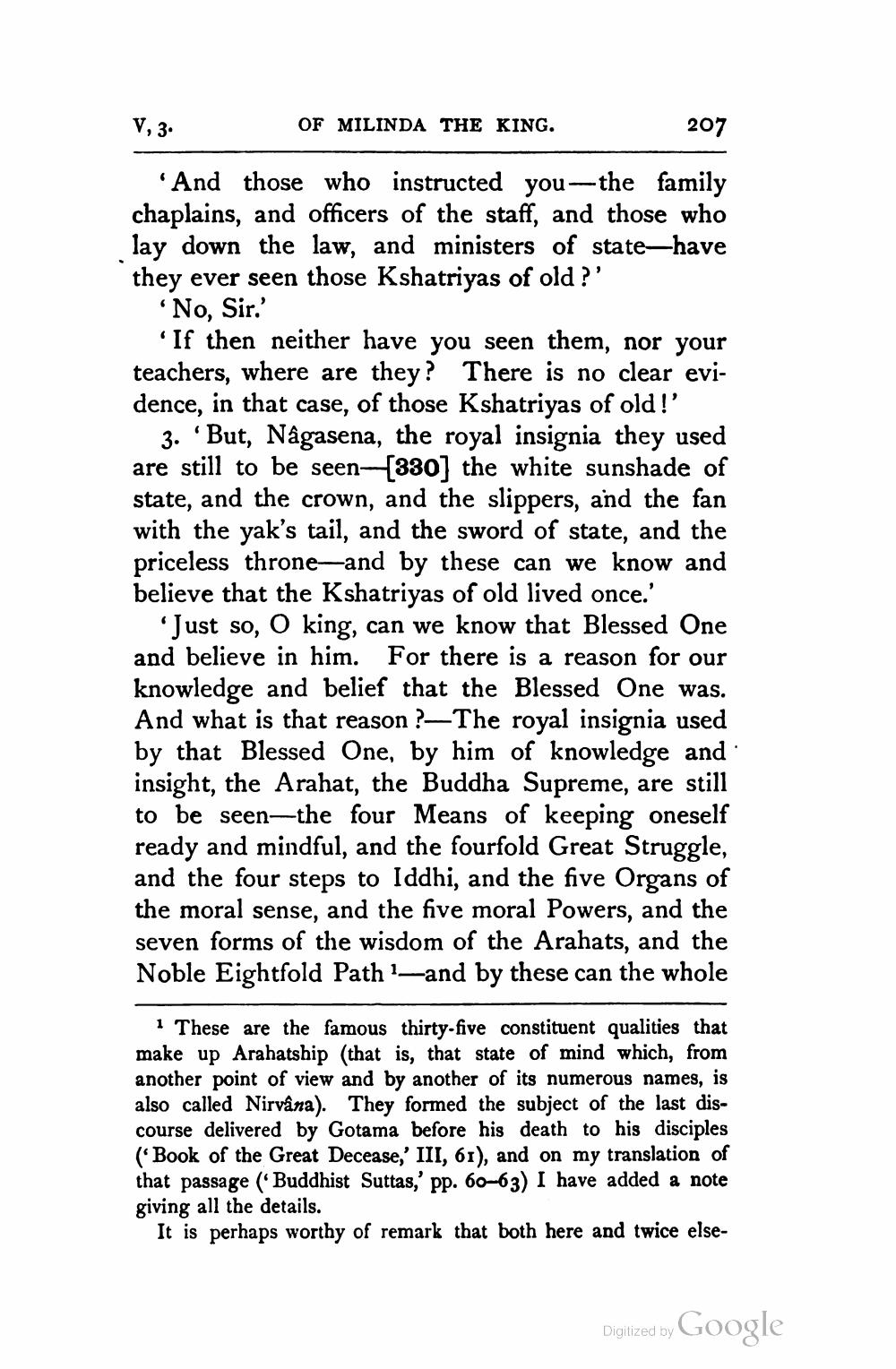________________
207
'And those who instructed you the family chaplains, and officers of the staff, and those who lay down the law, and ministers of state-have they ever seen those Kshatriyas of old?'
V, 3.
OF MILINDA THE KING.
'No, Sir.'
'If then neither have you seen them, nor your teachers, where are they? There is no clear evidence, in that case, of those Kshatriyas of old!'
3. 'But, Nâgasena, the royal insignia they used are still to be seen-[330] the white sunshade of state, and the crown, and the slippers, and the fan with the yak's tail, and the sword of state, and the priceless throne-and by these can we know and believe that the Kshatriyas of old lived once.'
'Just so, O king, can we know that Blessed One and believe in him. For there is a reason for our knowledge and belief that the Blessed One was. And what is that reason?-The royal insignia used by that Blessed One, by him of knowledge and · insight, the Arahat, the Buddha Supreme, are still to be seen the four Means of keeping oneself ready and mindful, and the fourfold Great Struggle, and the four steps to Iddhi, and the five Organs of the moral sense, and the five moral Powers, and the seven forms of the wisdom of the Arahats, and the Noble Eightfold Path-and by these can the whole
1 These are the famous thirty-five constituent qualities that make up Arahatship (that is, that state of mind which, from another point of view and by another of its numerous names, is also called Nirvana). They formed the subject of the last discourse delivered by Gotama before his death to his disciples ('Book of the Great Decease,' III, 61), and on my translation of that passage (Buddhist Suttas,' pp. 60-63) I have added a note giving all the details.
It is perhaps worthy of remark that both here and twice else
Digitized by
Google




